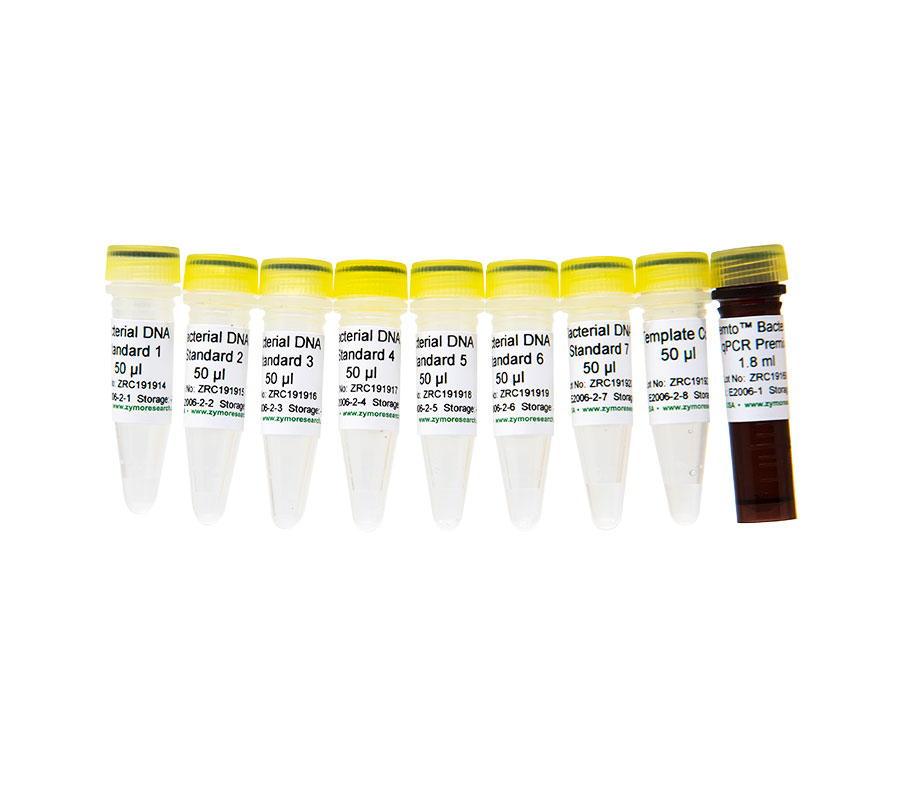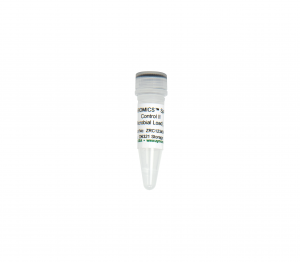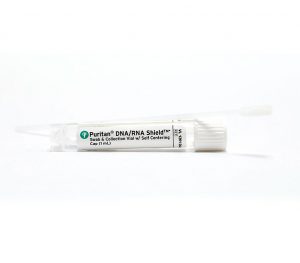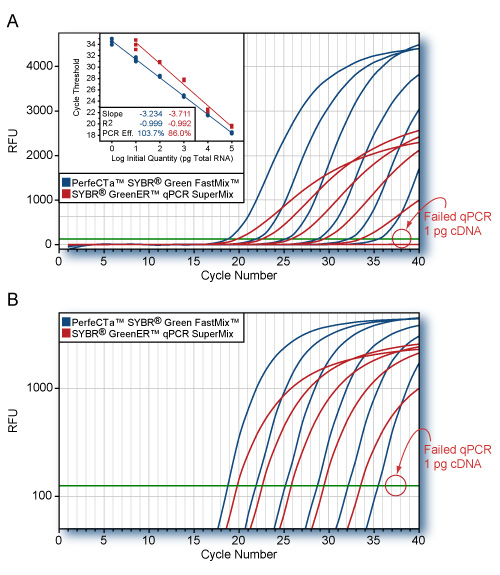Femto Bacterial DNA Quantification Kit
| Cat# | Name | Type |
|---|---|---|
| E2006 | Femto Bacterial DNA Quantification Kit | Bacterial |
Description
Highlights
- Quantify as little 20 femtograms of human DNA in as little as 1 µl of sample.
- High specificity and sensitivity for human DNA in a background of non-target DNA.
- Fast and simple: add samples to the PreMix… and quantify.
Description
The Femto Bacterial DNA Quantification Kit can be used to detect and quantify bacterial DNA with high specificity and sensitivity. Bacterial DNA can be reliably quantified in a background of non-bacterial DNA such as fungal, animal, and plant DNA, etc. This is essential for downstream applications that require accurate DNA input including quantifying bacteria DNA template for Next-generation sequencing library preparation and metagenomic analysis amongst others. With the Femto Bacterial DNA Quantification Kit, one can dependably quantify as little as 20 fg DNA from 1 µl purified from biological liquids, bacterial cultures, or environmental DNA samples.
Detection Range
20 fg to 20 ng DNA
Equipment
Real-time quantitative PCR system, vortex mixer, microcentrifuge, PCR tube strip or PCR plate; optically transparent sealing film for PCR plate or tube strip caps
Sample Source
Purified DNA
Q1: Is there any general advice on GLP for qPCR?
Since this kit is so sensitive, avoiding possible sources of contamination is key for a successful qPCR. – Work in a clean environment and decontaminate the benchtop and pipettes with a 10% bleach solution. – Wipe down the areas with ethanol to remove the trace amounts of bleach and allow the area to try. – Use filtered tips. – Take care to ensure that pipetting is efficient and accurate. Calibrate your pipettes regularly. – Add standards directly into the premix and pipet up and down to flush out any remaining liquid from the tip. – Avoid pipetting onto the walls as this may skew the results. – The SYTO9 dye present within the premix is sensitive to light, so working quickly and diligently is recommended.
Q2: Does qPCR Premix contain ROX?
Our qPCR Premixes does not contain ROX Reference Dye. Ensure that the ROX channel of your device is switched off.
Q3: Which settings can be used for signal detection?
Our qPCR Premixes contains Syto9. You can use the SYBR Green channel for signal detection.
Q4: Are the Femto kits certified for low bioburden?
No, kits are not certified.
Q5: What is the origin of the human DNA Standards?
The DNA is derived from HeLa cells.
Q6: What is strain JM109?
E. coli strain JM109 is a derivative of strain K12 and is also called K12 JM109. The genome size of the original genome of H12 is 4.64 Mb (ref). Ref: https://www.ncbi.nlm.nih.gov/pubmed/9278503
Q7: How is the copy number of the 16S rRNA gene calculated?
The standards included in the Femto Bacterial DNA Quantification kit are serial dilutions of E. coli genomic DNA. Each E. coli genome has about 7 copies of 16S rRNA gene. One can back calculate from the amount of genomic DNA to determine genomic copies, and then multiply by a factor of 7 to determine total copies of the 16S rRNA gene.
Q8: How to calculate the amount of genomic copies detected with E2006?
Genome copy # = DNA (g) / (g_to_bp const. x genome size) With DNA (g) = 20 ng g to bp const = 1.096 x 10^-21 g genome size = 4.6 x 10^6 bp 20 x 10^-9 g / (1.096 x 10^-21 g/bp x 4.6 x 10^6 bp) = 4.0 x 10^6 copies
 |
94 / 100 Bioz Stars |
Regional fresh snowfall microbiology and chemistry are driven by geograp…
LightCycler 480 SYBR Green I Master quantitative PCR (qPCR) mix (Roche, Indianapolis, IN, USA) was used in conjunction with 16S rRNA V4-5 region primers ( ; ). . Genomic DNA (gDNA) from Escherichia coli strain JM109 was used as a standard from a Femto Bacterial Quantification Kit (Zymo Research, Irvine, CA, USA) to calibrate amplification curves; seven standards, in addition to a no-template (negative) control (NTC), ranged from 2 × 10−5 to 20 ng of DNA per reaction well. qPCR reaction volumes were 20 μL of 1× Master Mix, 0.2 μM 334F (CCA GAC TCC TAC GGG AGG CAG C), 0.2 μM 519R (GWA TTA CCG CGG CKG CTG), and 2 μL volume of template DNA.. Amplification was conducted in technical triplicate with a LightCycler 480 II (Roche, Indianapolis, IN, USA).
Qualitative and Quantitative DNA- and RNA-Based Analysis of the Bacteria…
mSystems – Published 20 Nov 2018
To determine bacterial loads in human aspirate and mouse stomach samples, metagenomic DNA and cDNA were diluted 1:100 and duplicates of 2 µl used as the template for quantitative PCR with a Femto bacterial DNA quantification kit (Zymo Research), according to the manufacturer’s recommendations.. Genomic DNA from E. coli strain JM109, which is part of the kit and contains seven 16S rRNA gene copies per genome, was used as an internal standard
Liver macrophage-associated inflammation correlates with SIV burden and …
PLoS Pathog – Published 21 Feb 2018
iral load (copies/mL) was determined from a standard curve.. Levels of bacterial 16S DNA in the liver was assessed by qPCR using a Femto Bacterial DNA Quantification Kit (Zymo Research, E2006) per the manufacturer’s instructions.. Briefly, total DNA was extracted as described above and diluted in nuclease-free water to a final concentration of 100 ng/uL
| Cat # | Name | Size |
|---|---|---|
| E2006-1 | Femto Bacterial qPCR Premix | Bacterial DNA |
- Catalog#: E2006
- Package Length (in Inches): 6
- Package Width (in Inches): 5
- Package Height (in Inches): 0.5
- Package Weight (in Pounds): 0.1
- Type: Bacterial
- Unit Standard: Metric
- Volume Units: Milliliters









